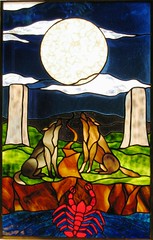A Lead-In To Review Tarot Cards
The tale of the Tarot is something that is obscured by time. There are some quotations and academics that couple the introduction of the Tarot with that of ancient Egypt, while other investigators and historians hint that the Tarot shares lineage with old gypsy cultures. Still, there are other analyzers that ascribe an Italian dawning to the Tarot cards, and it is accepted that the Tarot Cards evolved into a tool of divination right around the 1400s. Since that time, hundreds of various decks present grown and are currently in use. One of the most favoured decks being the Rider-Waite deck. The state-of-the-art tarot deck is separated into what is commonly called the major arcana or trump cards and minor arcane or suits of cards. The trump cards or major arcana consist of twenty two cards, every one of without suits. These include the fool, the Magician, the Empress, Justice, the Wheel of Fortune and others. The minor arcana consists of four suits of cards; swords, staves, cups and coins. Today, staves are time and again christened wands, but rods or batons are seen as well. Coins might be called disks or pentacles in some tarot decks. Every card has a disparate meaning, depending upon what the card’s suit is, and if it is componental of the Minor or Major Arcana. Every one of of the Tarot cards are numbered, so each card serves a reader with a specific numerological value which could be interpreted while divination practices. Furthermore, the meanings of the cards evolve depending upon where the cards appear in a studying, as well as what classification of card layout is used. The cards are read both singularly and together to get a complete translating. The largest standard layouts are the three card spread and the Celtic Cross.
